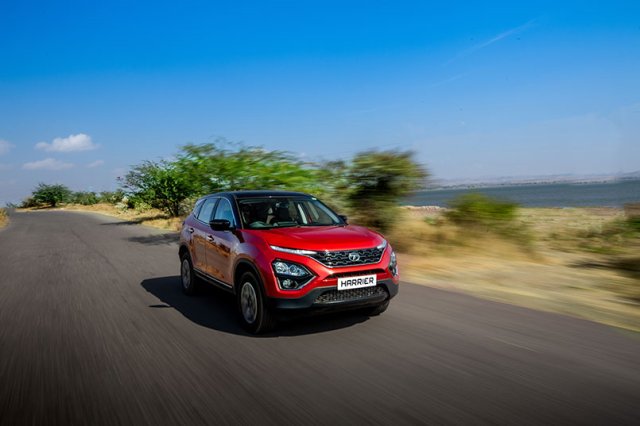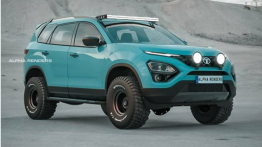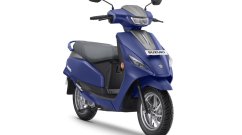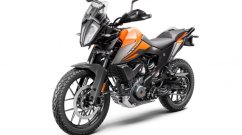Prologue
Tata Motors knows how to build rugged utility vehicles. A testament to that fact is not only the swarms of its UVs traversing the most difficult terrains by the general public, but also the host of Sumo 4x4 and Safari 4x4 variants which are in use across India’s defence forces. However, in this day of premium- and internet-hungry big-city consumers, SUVs are used more by attention-hungry soccer moms than thrill-seeking off-road enthusiasts. The numbers don’t lie and economically speaking, Tata is better off pleasing the former. So they did. Launched on the 23rd of January last year, the production-spec version of the H5X concept car managed to impress. However, as we knew, Tata has launched an updated version of Harrier and not only has it been updated to meet new emission standards but also introduces a host of new updates to better the outgoing version.
Exterior
Let’s start with the design updates on the 2020 Harrier. From afar, people who aren’t that in tune with the latest happenings of the automotive world can easily mistake the new harrier for the old. However, once you come closer, the updates are a lot easier to spot. First thing you might notice is the updated colour palette that the Harrier now offers. It gets two new colour options - Calypso Red and Telesto Grey. However, Tata has now discontinued the option of Calysto Copper, which was the signature shade for the previous version.
Next, the alloys on the 2020 Harrier have now been redesigned and you now get a two-tone, machined-alloy finish. In our opinion, these alloys fill out the wheel arches much better than the ones on the MY2019 model. As a result, they give the Harrier a much more proportioned stance to the overall design. Other than these changes, another minor update are the redesigned ORVMs which are now more aerodynamic for less drag and better wind noise resistance at a higher speed. So, these are all the major changes on the outside and while they don’t seem like much, they have freshened up the design a tad. However, the 2020 Harrier gets a lot more significant changes in the cabin.
Also Read - Tata Harrier vs MG Hector
Interior
Step inside and you’ll notice that the interior ambience remains largely unchanged, yet the updates to the new Harrier make it a lot more premium than what it was. Firstly, the most noticeable change is the addition of a new panoramic sunroof. It gets a large glass area and with the sunshade open, makes the cabin a lot better lit and gives the impression of its being a lot roomier as well. You get three different controls that are placed on the same panel that houses the interior light switches. One for the sunshade, which can be open or closed completely.
The second switch is to open and close the sunroof as a vent and the third, to open the sunroof completely. All of these operate either as a one-touch or touch-and-hold mechanism. The next major update is the 6-way power-adjustable driver’s side seat. While the passenger side seat still needs to be adjusted manually, a powered seat for the driver is definitely a welcome, practical addition. Not just that, another nifty addition to the Harrier’s options list is an auto-dimming IRVM. Apart from added conveniences, Tata Motors has even added extra sound insulation under the engine bay and this was apparent from the reduced diesel clatter seeping in.
So, from what we get and on to what we don’t, let’s come to the 8.8-inch touchscreen infotainment system. While the system does get the usual array of smartphone-connectivity apps, it still doesn’t offer any connected technology like the one that has already made its way into the new Nexon EV. This was one update we were hoping the Harrier would get. Next, we come to safety. Here, too, the 2020 Harrier has improved thanks to the electronic stability program now available as a standard feature across all variants. So with that, let’s get to the biggest update that you find on the 2020 Tata Harrier - the new, BS-6 compliant, Kryotec 170 diesel engine.
Also Read - Tata Harrier Petrol and Tata Gravitas Petrol Under Development
Engine
When the Tata Harrier was introduced in its first avatar, the SUV came with FCA’s widely-used 2.0-litre diesel unit which was in its BS-4, 140 bhp state-of-tune. However, for 2020, apart from the obvious BS-6 conversion, Tata has now uprated the engine’s peak power output to 170bhp but maintaining a similar torque output of 350Nm. And if that wasn’t exciting enough already, the new Tata Harrier also gets a 6-speed automatic transmission option. The new auto ‘box has been sourced from Hyundai and could be previously found doing duty in the Tucson SUV. In our first drive impressions, we found the new Tata Harrier to be a whole lot more punchy yet a bit more refined than the previous version. With that said, the refinement bit is largely true but diesel clatter is a bit audible once the tacho goes beyond the 3,500-4,000 rpm mark. However, not enough to put a damper on the experience.
The power is available on tap at any given point in city traffic and out on the highway, it cruises effortlessly at three-digit speeds, ticking below 2,000rpm without a whiff of complaint from the engine what-so-ever. In our timed acceleration sprint of the new Harrier with the automatic transmission, we managed to do the 0-60 km/h run in 5.12 seconds, 0-100 km/h in 10.15 seconds and 0-120km/h in 13.87 seconds. Then we come on to the two driving modes - Sport and Eco. What this does is alter engine and throttle mapping to favour 100 per cent power availability in Sport or watered-down throttle response in order to be more fuel-efficient in Eco.
Manoeuvring through the 6-speed manual transmission version, the car does offer a lot more control over its power. However, 350Nm of torque through an open-diff FWD system is the perfect recipe for some good ol’ fashioned torque steer action. Thus, getting into the automatic version, you immediately feel that the power output is a lot more manageable. Not only is it intuitive but is also very seamless, even if you decide to operate the box manually. Add to that, the fact that Tata hasn’t done anything to improve on complaints of an extremely long clutch-travel and you’ll see why the new automatic transmission variant of the Harrier emerged as the winner for us if we were the ones to pick which option to choose.
Dynamics
When it comes to handling, not much has changed in this department. The suspension is quite pliant over broken and undulated surfaces but when it comes to the twisties, it does not disappoint. The body roll is well controlled and helps the car change directions in a fairly quick-ish manner despite a wheelbase measuring 2,741mm. However, where the car really shines is its highway cruising ability. Even in the upper echelons of three-digit speeds, the suspension manages to keep the car stable and confidence-inspiring.
The major gripe I did have with the car, which has been carried over from the previous version, is its braking, or lack thereof. Like the outgoing version, the Harrier gets a disc brake setup at the front and drum brakes at the rear. As a result, with a kerb weight of 1.7 tonnes, the Harrier is a little slow to come to a rest. The brake bite and feel are adequate, it’s the size of the vehicle that is a bit too optimistic for the stopping power it gets.
Epilogue
In our final point of this review, let’s compare the prices of the old and new Harrier. Just before the outgoing version was killed off the market, the Harrier carried with it a price tag of INR 12.99 lakh (ex-showroom, Delhi) for the base XE trim and INR 16.55 lakh (ex-showroom, Delhi) for the XZ trim. However, in its updated form, the 2020 Harrier comes with a price tag of INR 13.45 lakh (ex-showroom, Delhi) for the base XE trim. While the top-of-the-line XZA+ trim, on the other hand, comes in at a price of INR 20.25 lakhs (ex-showroom, Delhi) with all the bells and whistles that the 2020 Harrier has to offer. So, in terms of pricing, we feel that the new Tata Harrier is now a better offering than the outgoing version. While the outgoing Harrier gave us style, features and solid build quality, the new version has added even more of a premium touch. Overall, the 2020 Tata Harrier has become a more complete offering.
Words - Karan Mathur









































